What you need to know about the wonders of Caddo Lake State Park

Caddo Lake State Park is a truly remarkable place that holds great ecological significance, as well as stunning views. It is one of the most unique and beautiful locations in Texas that has existed for millions of years, boasting an amazing aquatic ecosystem.
@taylorsometimes Things to know for your trip to caddo lake! #caddolake #placestovisit #placestovisittexas #texas #texasthings
♬ Nature Love – Nature Sounds
After my visit, I became a little obsessed with the park and learning about the wildlife there. It’s seriously one of the more magical places I have ever been in my state. Let’s dive into the exceptional features that make Caddo Lake a wonderland of ecology, discuss human impact on the ecosystem and how to protect it, and provide tips for visiting this stunning park.
HERE’S WHAT YOU SHOULD KNOW ABOUT BIG BEND
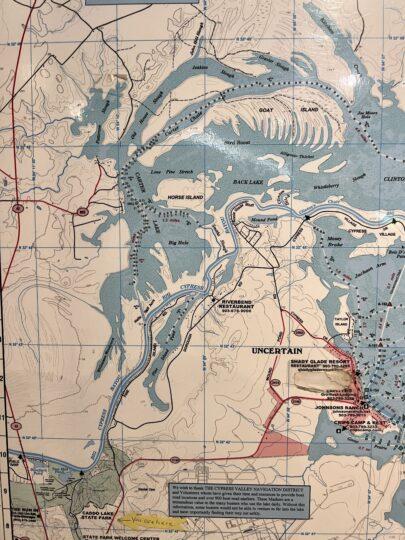
Caddo Lake’s Ecological Diversity
Caddo Lake’s ecosystem is exceptionally diverse, making it a unique haven for wildlife. The lake is home to a wide range of plant and animal species, including the rare ivory-billed woodpecker. The park’s bottomlands, mesic, and uplands provide habitats for various wildlife, including American alligators and paddlefish.
At Caddo Lake, you may hear the prothonotary warblers before you see them. These migratory warblers nest in cypress trees along the shoreline with their nests built inside holes in old stumps or dead branches of trees that fell into the water during storms years ago!
Caddo Lake is also home to the oldest surviving animal species in North America: the paddlefish. Fossils dating back 300 million years indicate that paddlefish existed before the age of the dinosaurs! These ancient creatures, also known as spoonbills, have paddle-like snouts that they use to sift through the water for tiny aquatic organisms. Paddlefish populations have been declining due to overfishing, habitat loss, and other factors, making their survival a conservation concern.
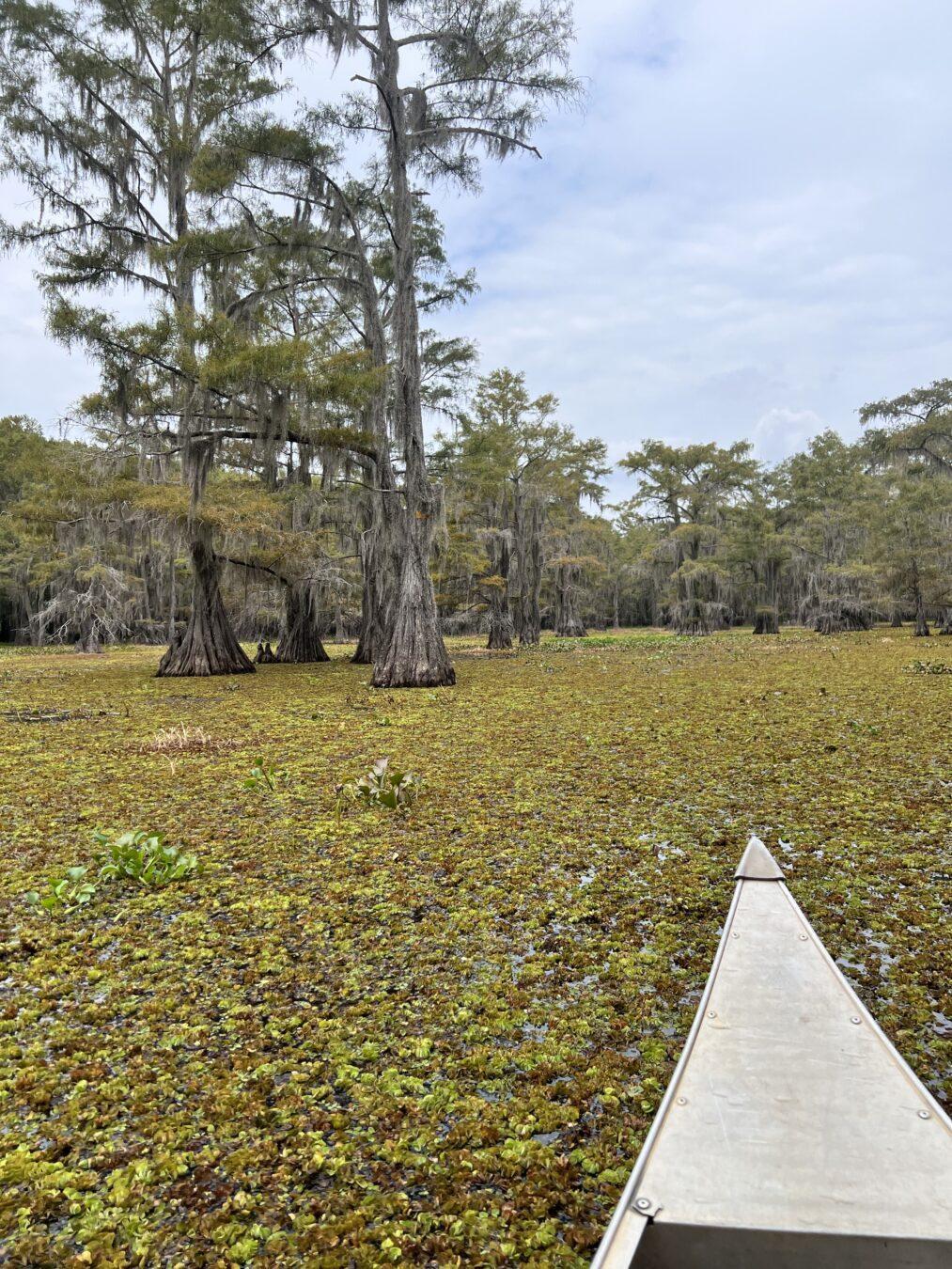
The Importance of Wetlands
Wetlands play a crucial role in our environment by filtering pollutants, mitigating flooding, and providing habitat for a variety of plant and animal species.
Wetlands are often referred to as “nature’s kidneys” because they filter pollutants from the water before it enters other habitats like lakes and rivers. This process is called “biogeochemical cycling,” which involves the interaction of physical, chemical, and biological processes that remove and transform pollutants.
As water flows through wetlands, sediment and nutrients are trapped in the vegetation and soil. Microorganisms that live in the soil break down the pollutants, converting them into less harmful forms that can be used by plants for growth. Wetlands also have the ability to absorb excess nutrients like nitrogen and phosphorus, which are common pollutants in agricultural runoff.
Additionally, wetlands can remove heavy metals and toxins by binding them to organic matter in the soil or through processes like adsorption, precipitation, and co-precipitation.
By removing pollutants and excess nutrients from the water, wetlands help to improve water quality and protect downstream habitats from pollution. They also provide habitat for a variety of plant and animal species, many of which are unique to wetland environments.
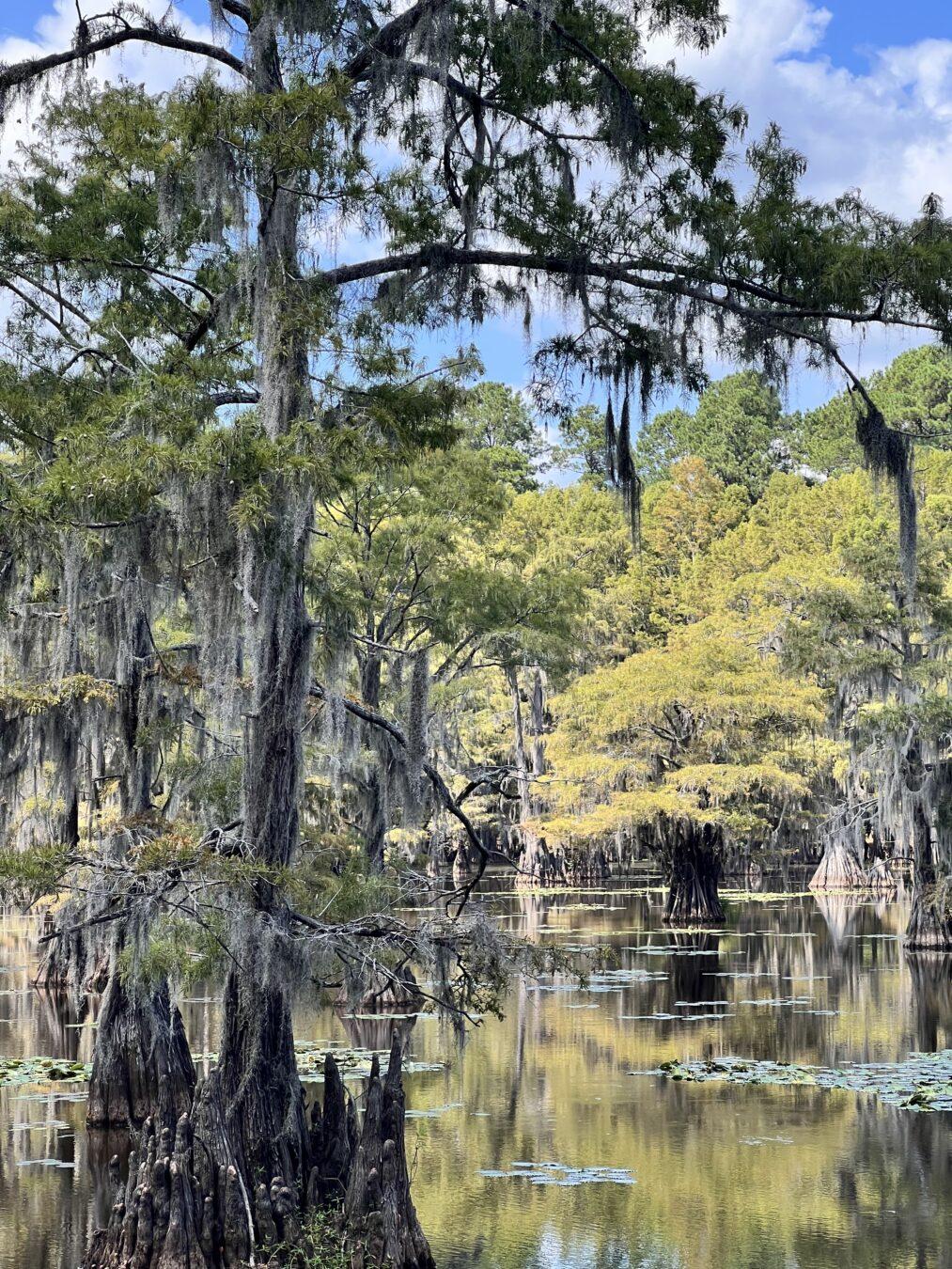
The Mysteries of the Cypress Swamps
The bald cypress (Taxodium distichum) is the dominant tree species found in the swamps of Caddo Lake. These trees can live for over 1,000 years, and many of the cypress trees in the park are estimated to be between 400 and 500 years old. The trees grow in the waterlogged soils of the swamp, with their buttressed trunks and extensive root systems helping them to stay upright. Long tendrils of Spanish moss swaying from tree branches give the wetlands a magical and mysterious appearance. Historic tribes used the moss to make clothing, huts, and bedding. The moss’ name may have come from French explorers who thought it resembled the long beards of Spanish conquistadors.
The cypress swamps provide habitat for various unique plant and animal species, including the elusive ivory-billed woodpecker.
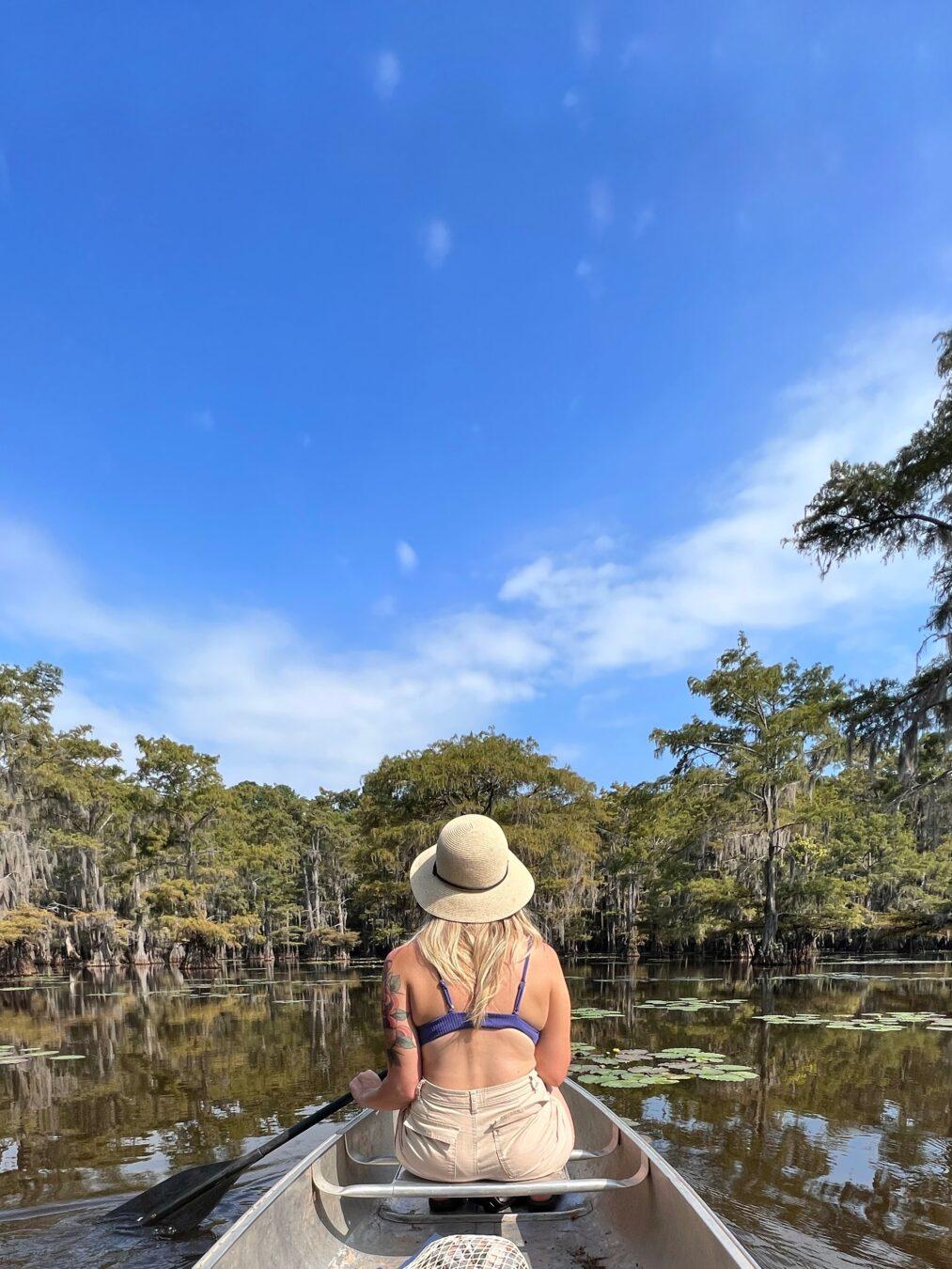
One of the most fascinating aspects of the cypress trees is their ability to adapt to changing water levels. During periods of drought, the trees can slow their growth and conserve water by reducing the size of their leaves. When water levels rise again, the trees can quickly resume their normal growth patterns.
In addition to their impressive longevity and adaptability, cypress trees also play an important ecological role in the wetlands. Their roots help to stabilize the soil, prevent erosion, and provide habitat for a variety of aquatic species. The trees also act as a filter, removing excess nutrients and pollutants from the water, which helps to maintain the high water quality of the lake.
Cypress trees have been a valuable resource for humans for thousands of years. Native American tribes in the region used the wood for building canoes, houses, and other structures. The wood was also used for furniture, shingles, and other household items. Today, the wood is still prized for its durability and resistance to decay, and is used for outdoor furniture, decks, and siding.
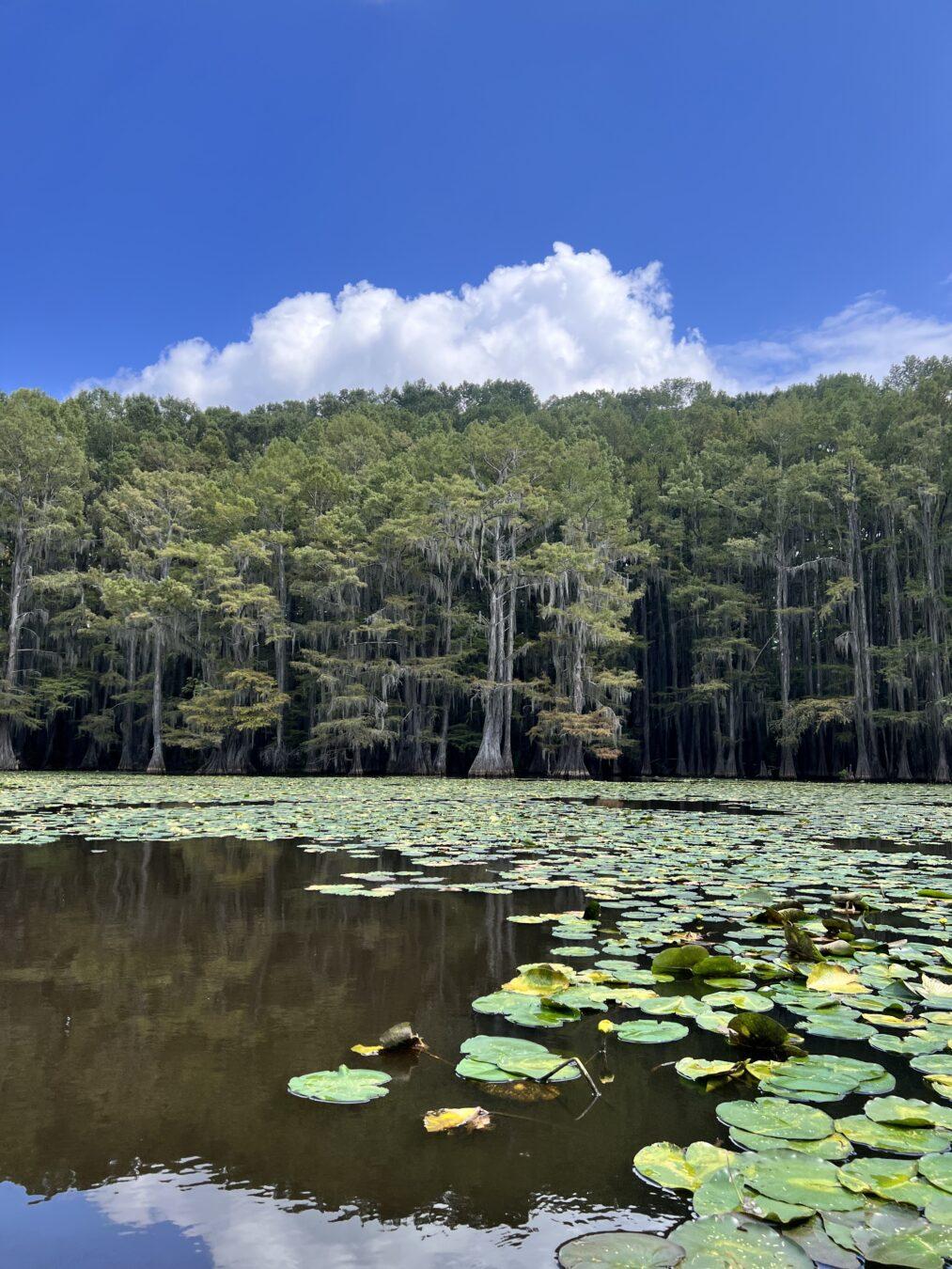
Human Impact on Caddo Lake
Unfortunately, human activity has negatively impacted Caddo Lake and its ecosystem. Logging, oil drilling, and pollution have all had a devastating effect on this natural wonder.
In the 1930s and 1940s, extensive logging took place along the shores of Caddo Lake to harvest cypress trees for boat and other product construction. However, many of these trees were cut down before they were old enough to bear seed cones necessary for reproduction, leading scientists to believe that there may never be any new growth in these areas again unless someone plants them. Oil exploration began after World War II, but no significant oil was found.
Caddo Lake State Park: An Eerie Masterpiece
Caddo Lake is an ecological wonder that demands our protection. This unique and beautiful ecosystem is of great significance, and it is imperative to preserve it for future generations. The knowledge of the human impact on this natural wonder must inspire us to take action and protect it from further harm. When you visit Caddo Lake State Park, take the time to learn about the environment, and be mindful of your actions to ensure this remarkable ecosystem’s sustainability.




